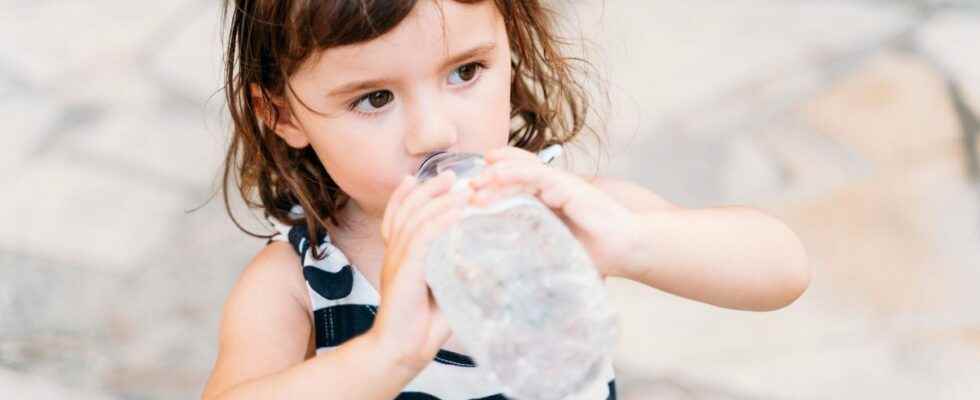Published on
Updated
Reading 2 mins.
The association Agir pour l’environnement published a report on July 20 on the presence of microplastics in the most used water bottles in France. The result is clear, especially in the models of bottles for children: we drink plastic.
Polypropylene, polyethylene, PET… This is what we also drink when we drink bottled still water. It’s the alarming report published by the association after having entrusted the bottles that we buy the most, to Labocea, a laboratory specializing in water analysis. Results: between 1 and 121 plastic microparticles per liter were identified in 7 out of 9 bottles.
The Vittel Kids, the most impacted bottle
To obtain a result as close as possible to our consumption, the association has targeted the most consumed bottles of water, namely Badoit, Carrefour source Montclar, Cristaline, Evian (50 cl and 1 litre), Perrier, Vittel (33 cl for children , and 1 liter), Volvic.
With the exception of Carrefour source Montclar and Volvic, all the water contained microplastics, ie micro debris less than 5mm in size.
The worst being reserved for a bottle of water for children, La Vittel kids, with 121 microparticles detected, probably because of its cap/pacifier which is handled several times. “A real scandal. when you think of buying pure water for your child and you give him plastic“, protests Magalie Ringoot, coordinator of the association’s campaigns.
The use of plastic, a large-scale problem
“This is unfortunately not a surprise either” regrets Magali Ringoot “these analyzes on French bottles simply confirm the result of a 2019 American study which showed that 93% of bottled water around the world included plastic microparticles” she reveals.
What is the source of this pollution? Anything that can evoke abrasion of the bottle during its use (simply opening its cap, or cleaning it), but also exposure to UV rays, heat, storage time, promote the release of these micro particles directly into the water. “We now know that plastic does not disappear, it breaks up into tiny bits, but it is always present. The only way to protect yourself is to avoid exposure to plastic, to favor tap water, stainless steel or glass water bottles, to promote water access points in cities … without forgetting that beyond food health, plastic water bottles are an aberration from an environmental point of view “ she reminds
